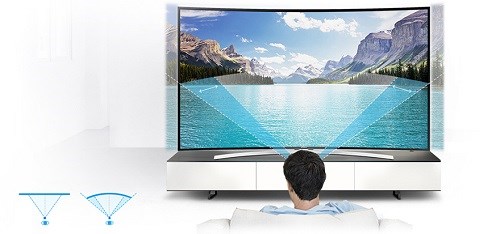Samsung Gets ISRI’s 2016 Design for Recycling Award
First time a television has been built with a greenhouse gas emission as a building block.
First time a television has been built with a greenhouse gas emission as a building block.
Samsung Electronics America, Ridgefield Park, N.J., is the recipient of the 2016 Design for Recycling (DFR) Award for the use of environmentally-conscious materials and advanced recyclable design in its 2016 Curved Full HD TV awarded by (ISRI).
The 2016 Curved Full HD TV (UN55K6250) incorporates easy-to-disassemble, snap-together parts that are made with minimal chemical content. The snap closures eliminate the use of 30 screws, making it easier for recyclers to disassemble their products. In fact, this television should take less than 10 minutes to disassemble.
Moreover, in its efforts to create an eco-conscious product, Samsung opted to substitute conventional plastic with eco-friendly polyketone made from carbon monoxide, making this television the first to be built with a greenhouse emission as a building block (read more about polyketone here).
Said ISRI president Robin Wiener, “Samsung’s products showcase the company’s efforts to focus on resource and energy efficiency as well as the use of single materials, unbleached chlorine-free paper, and nonuse of hazardous substances. Samsung’s concern for product recyclability has allowed them to move forward with an industry-first design that combines best-in-class experiences with an eco-friendly outlook, which makes them a perfect selection for this year’s award.”
For over 25 years, the DFR Award has been ISRI’s most prestigious award, annually given to the most innovative products designed with recycling in mind. To be eligible, a product must be designed/redesigned and manufactured to:
• Contain the maximum amount of materials that are recyclable;
• Be easily recycled through current or newly designed recycling processes and procedures;
• Be cost effective to recycle whereby the cost to recycle does not exceed the value of its recycled materials;
• Minimize the time and cost involved to recycle the product;
• Have a net gain in the overall recyclability of the product while reducing the overall negative impact on the environment; and
• Reducing the use of raw materials by including recycled materials and/or components, among other qualifications.
Search for nearly 100,000 grades of polymers on the Universal Selector by clicking here

Related Content
-
PHA Compound Molded into “World’s First” Biodegradable Bottle Closures
Beyond Plastic and partners have created a certified biodegradable PHA compound that can be injection molded into 38-mm closures in a sub 6-second cycle from a multicavity hot runner tool.
-
Multilayer Solutions to Challenges in Blow Molding with PCR
For extrusion blow molders, challenges of price and availability of postconsumer recycled resins can be addressed with a variety of multilayer technologies, which also offer solutions to issues with color, processability, mechanical properties and chemical migration in PCR materials.
-
Breaking News From NPE2024
Here is a firsthand report of news in injection molding, extrusion, blow molding and recycling not previously covered.






